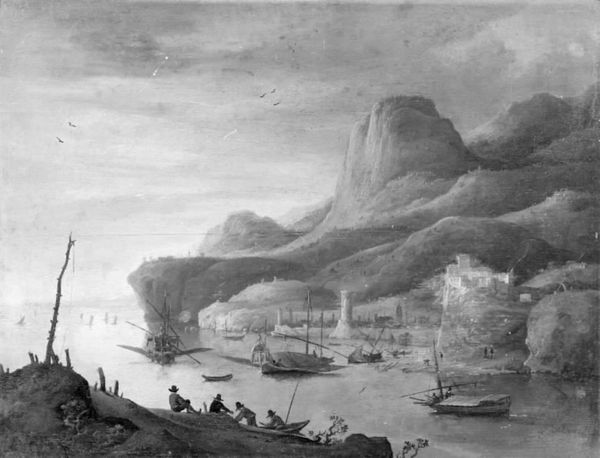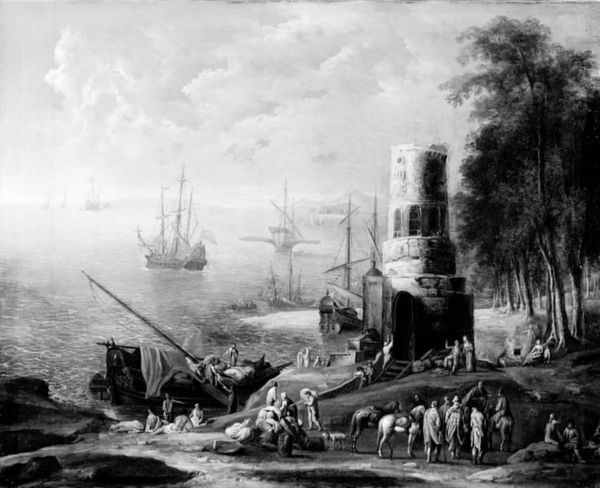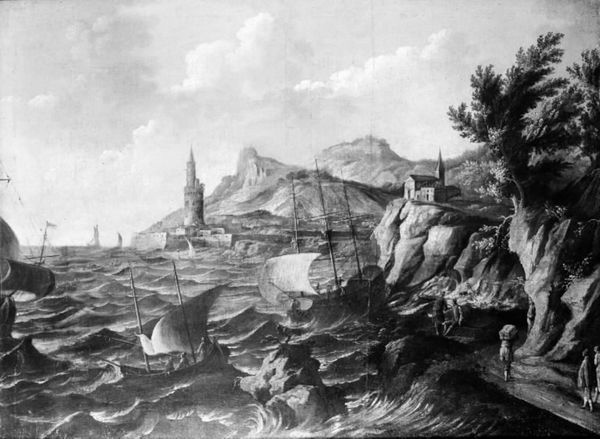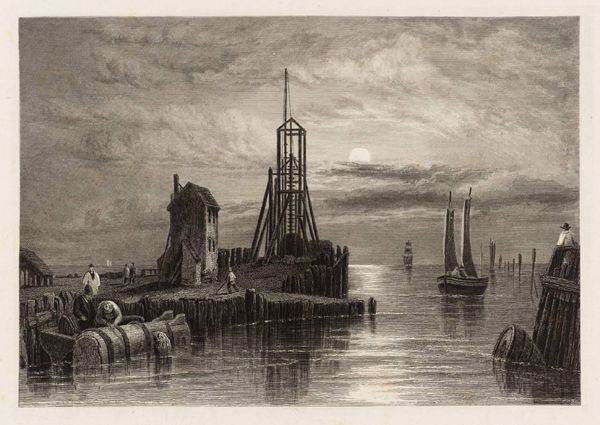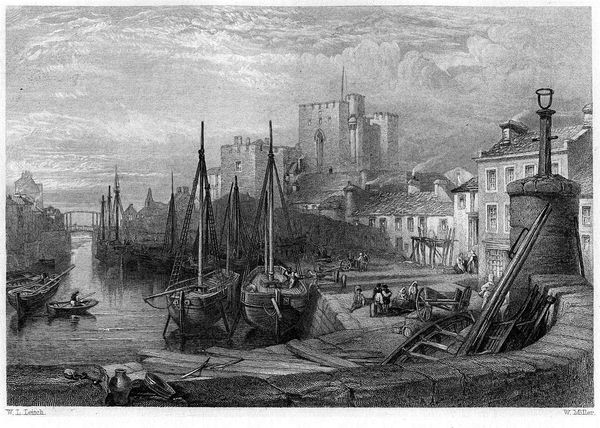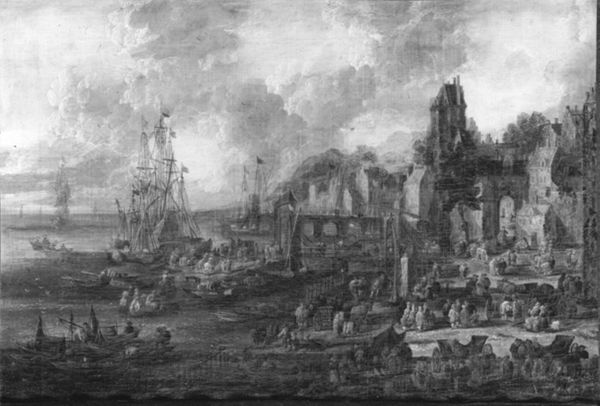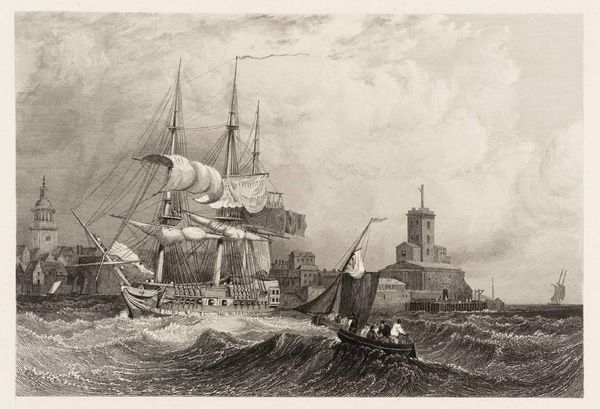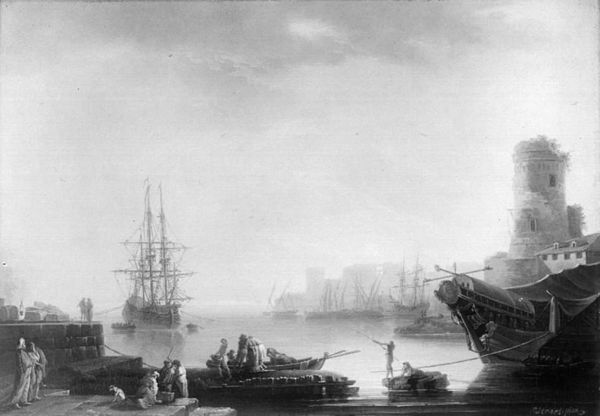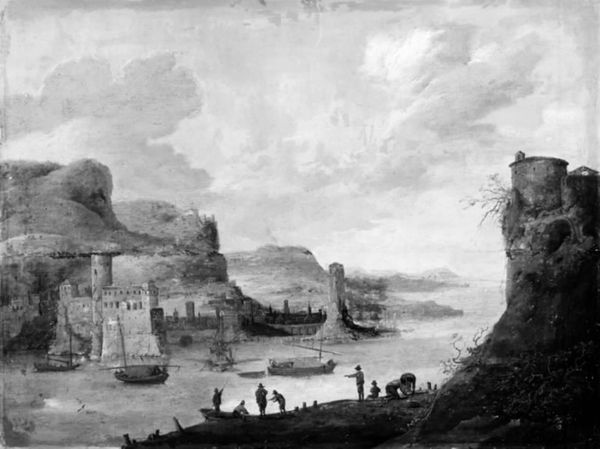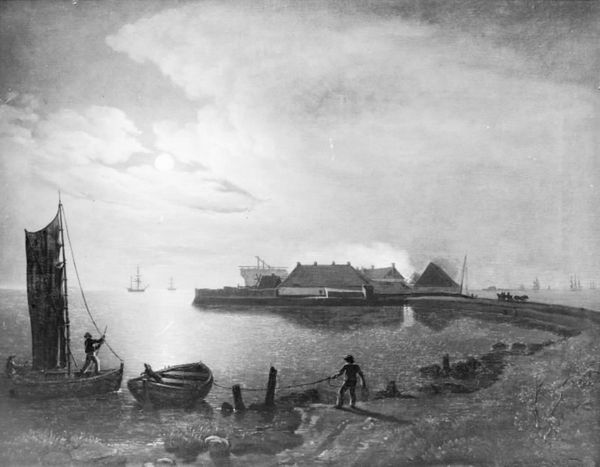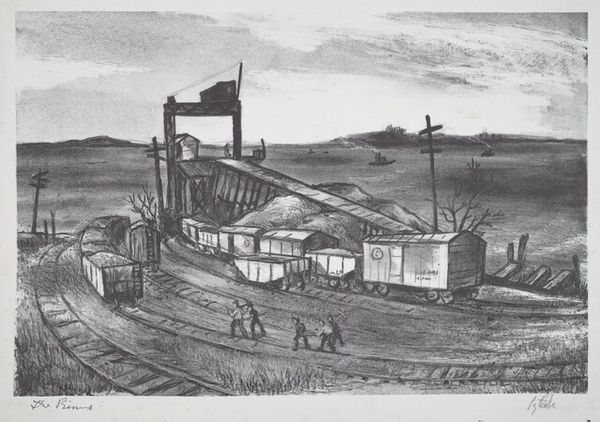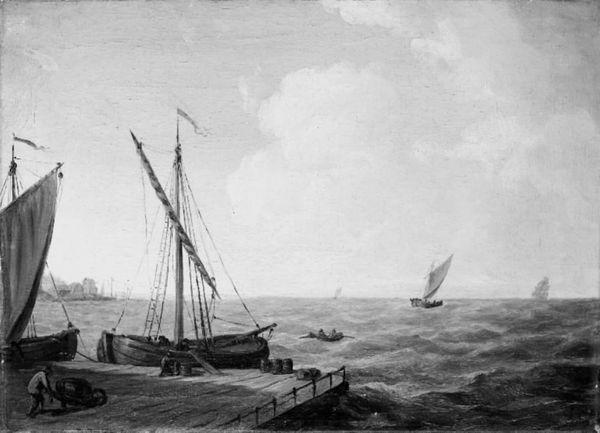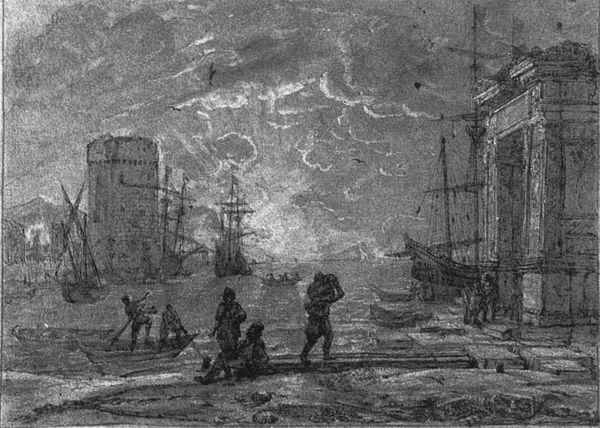
painting, oil-paint
#
baroque
#
painting
#
oil-paint
#
landscape
#
charcoal drawing
#
black and white
#
cityscape
#
realism
Dimensions: 48 cm (height) x 66 cm (width) (Netto)
Editor: Here we have "A Seaport," an oil painting by Adriaen van der Kabel, made sometime between 1630 and 1673. Looking at this image, it’s monochrome palette and detailed rendering of ships makes me think of maritime trade and labor. What strikes you most about it? Curator: The prominence given to the depiction of maritime activity, coupled with the visible labor involved, urges me to consider the material conditions of its production. Notice how the artist has chosen to spotlight not the grand narrative of trade empires, but rather the infrastructure and workforce enabling such operations. What can we infer about Van der Kabel’s relationship with, or commentary on, 17th century mercantile culture, given his emphasis on its physical processes? Editor: So, instead of just seeing a pretty picture of a port, you are focusing on what it tells us about how things were actually made and moved? Curator: Exactly! Consider the ships themselves. They're not simply objects of aesthetic admiration. Instead, they represent vast networks of resource extraction, material transformation and human labour – from the felling of trees for timber, to the forging of iron for anchors and weaponry, and finally to the grueling work of the sailors on board. And that tower in the center, a piece of architecture designed to facilitate maritime logistics: it symbolizes the processes through which these things became accessible. The black-and-white monochrome only calls my attention to this process even more so, leaving very little room to embellishment or aesthetic "fancy". What materials, processes, or forms of labour seem foregrounded, even celebrated, in Van der Kabel’s composition? Editor: I never would have considered the painting that way; that art piece helped shed some light on the production processes that underpinned global exchange during that time! Curator: Indeed, viewing art through a materialist lens can unveil how the artwork bears witness to both labor and consumption!
Comments
No comments
Be the first to comment and join the conversation on the ultimate creative platform.
